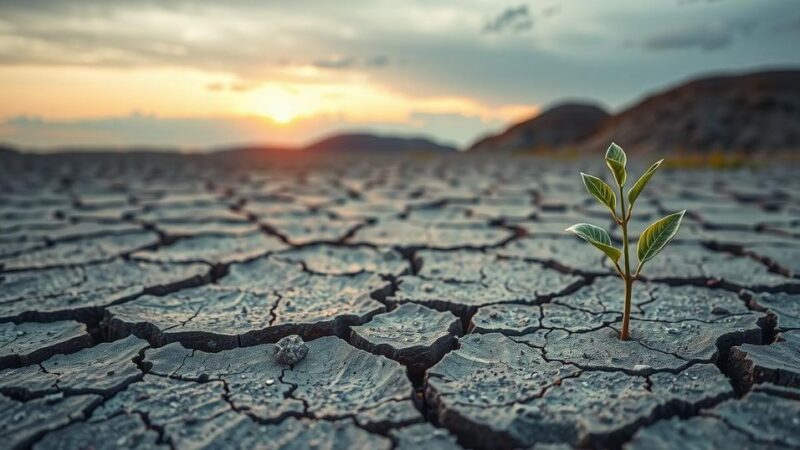The WISER EWSA project initiates a testbed in Zambia aimed at enhancing weather forecasting and early warning systems for vulnerable communities affected by severe weather events. Following recent cyclones, the project focuses on collaboration among experts and local stakeholders to improve communication and response strategies. The testbed emphasizes the importance of timely, accessible information to protect lives and livelihoods in southern Africa amidst increasing climate-related challenges.
On January 30, 2025, the Weather and Climate Information Services (WISER) Early Warnings for Southern Africa (EWSA) project launches its second intensive forecasting testbed in Zambia, with operations in Mozambique and South Africa. As Mozambique and Madagascar manage the aftermath of recent tropical cyclones Dikeledi and Chido, a team of meteorological experts will convene in Lusaka for a week-long event aimed at strengthening forecasting measures and disseminating critical weather information to at-risk communities.
The recent cyclones highlighted the southern Africa region’s vulnerability to severe weather, displacing thousands and causing significant fatalities. Cyclone Chido, for instance, with winds surpassing 200 kilometers per hour, resulted in over 100 deaths and extensive damage in Mozambique. These natural disasters have underscored the need for improved forecasting capabilities and timely warnings to safeguard lives and livelihoods in the face of increasingly erratic weather patterns, exacerbated by climate change.
The WISER EWSA testbed is designed to evaluate forecasting methodologies in real-life scenarios. It follows the first nowcasting testbed held in early 2024 and aims to enhance the response mechanisms for the current rainy season, from January 30 to February 7, 2025. By providing regular updates to community observers, this testbed will improve communication regarding severe weather events and their potential impacts.
Nowcasting focuses on short-term weather events, analyzing storms in real-time to provide immediate warnings. Early alerts can significantly mitigate the risks linked with heavy rainfall and thunderstorms, aligning with the United Nations’ initiative for universal weather hazard preparedness by 2027. The WISER EWSA programme aims to empower vulnerable populations through better access to timely and comprehensible weather forecasts.
Building on previous experiences, the project emphasizes collaboration with urban communities and strengthens the capabilities of meteorologists in predicting severe weather. Direct engagement with communities—including those with disabilities—ensures that the information is relevant and accessible. Such proactive approaches are expected to promote timely responses to weather-related alerts across the region.
Technical insights gained indicate advancing capabilities within the meteorological services of Zambia, South Africa, and Mozambique regarding nowcasting. Challenges remain, particularly in broadcasting timely updates, highlighting the importance of rapid communication through diverse channels to ensure community preparedness. INAM in Mozambique has effectively used various platforms such as WhatsApp and radio to broaden the reach of nowcasting services.
Sustainability of nowcasting practices remains a focal point, as delivering consistent weather services requires significant resources. Current obstacles include unstable internet access and the high costs associated with effective communication. Workshops during the testbed will explore the socioeconomic benefits of enhanced early warning services to devise sustainable financing models for these critical initiatives.
Community engagement has proven fruitful, with volunteers actively participating in the dissemination and verification of nowcasts. Collaborative efforts with local disaster management committees have integrated these initiatives within broader disaster risk reduction strategies. Ensuring that local communities are educated about early warnings can enhance overall resilience to adverse weather events.
Utilizing a co-production model enhances the quality and usability of weather-related information by involving both producers and users in the process, fostering a climate of trust and credibility. As communities grow more aware of the applicability of forecasts, they become better equipped to mitigate the impacts of extreme weather events, thus enhancing their safety and reducing risk.
This article focuses on the launch of an intensive weather forecast testbed by the WISER EWSA project in southern Africa, specifically in Zambia, Mozambique, and South Africa. The context of the testbed is heightened by recent cyclones that significantly impacted the region. The initiative aims to improve early warning systems and enhance community resilience against hazardous weather patterns exacerbated by climate change. This testbed emphasizes collaboration among meteorologists and local communities to make weather forecasts more accessible and actionable.
The WISER EWSA project’s second intensive testbed represents a significant step toward enhancing weather forecasting and community preparedness in southern Africa. By focusing on real-time nowcasting and collaboration with local communities, the initiative addresses the pressing need for effective early warning systems in a region increasingly affected by severe weather. Sustainable financing and technology integration are imperative to maintain and expand these critical services, ultimately improving resilience and reducing weather-related risks.
Original Source: www.metoffice.gov.uk







